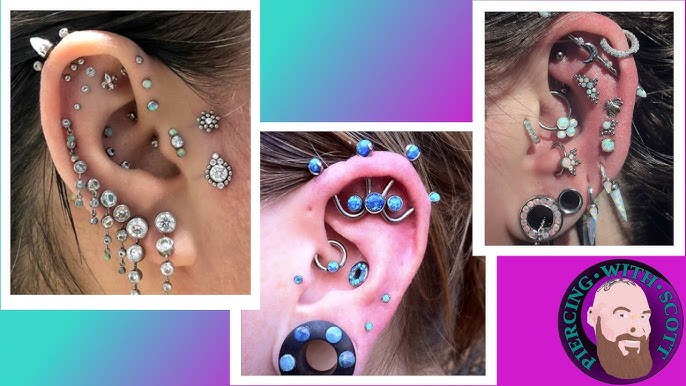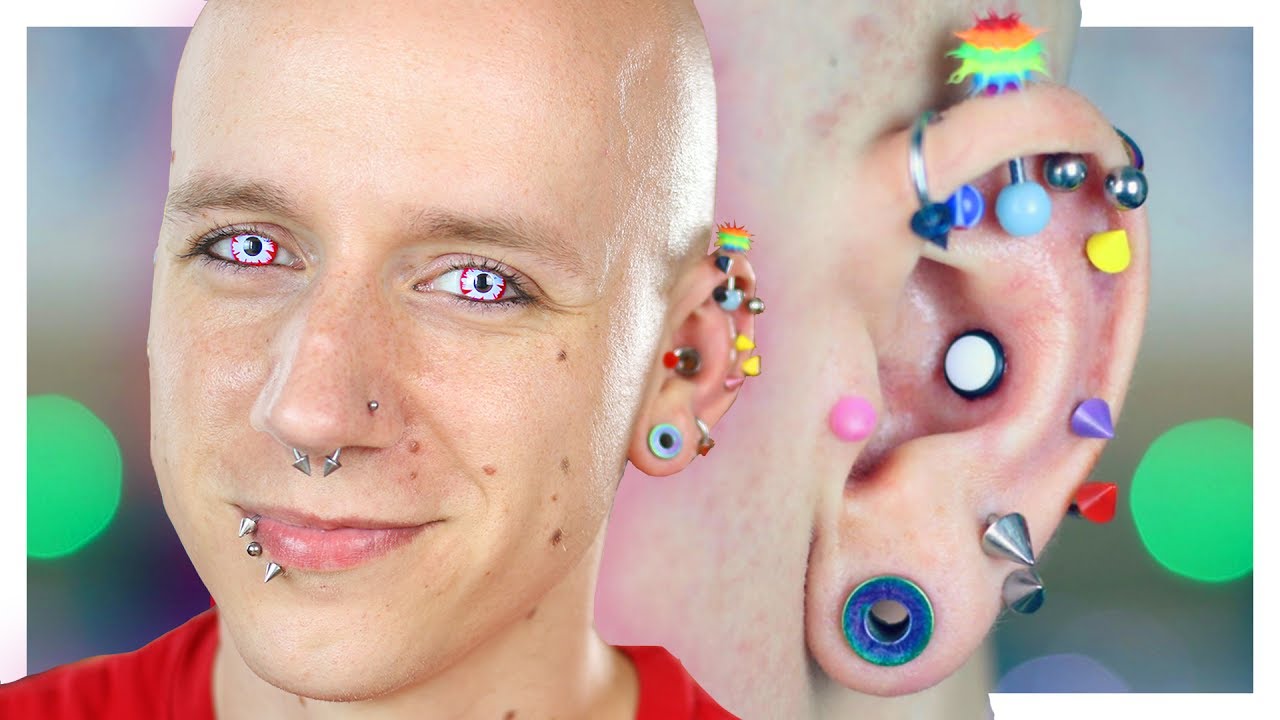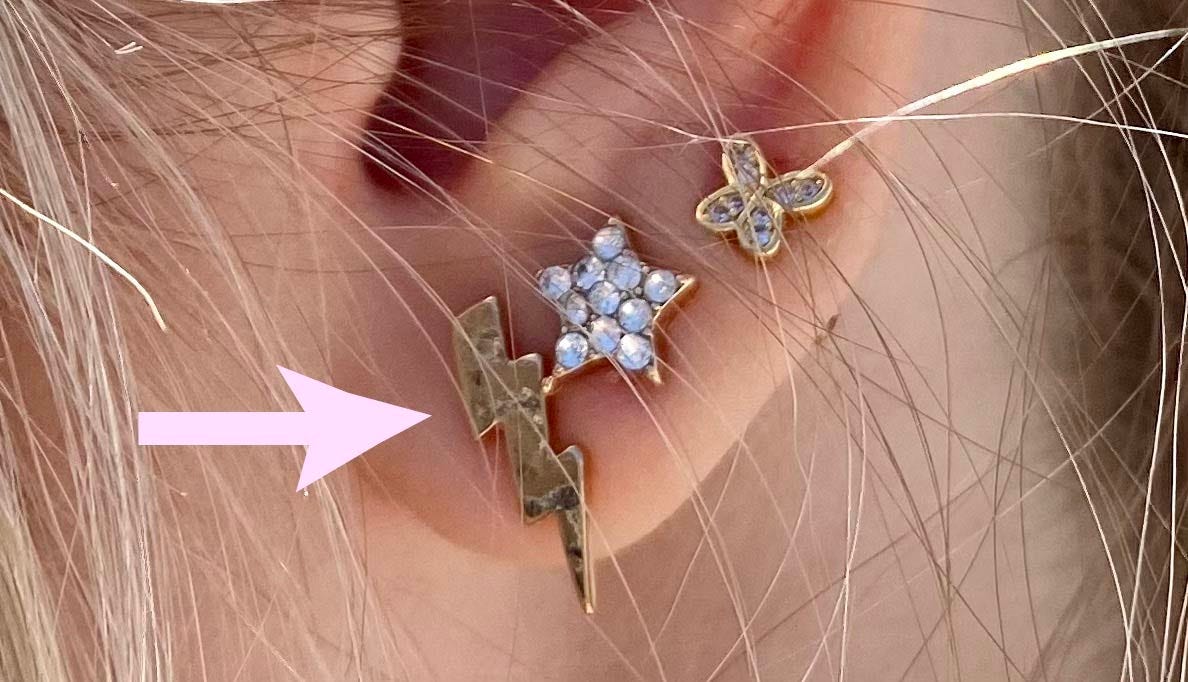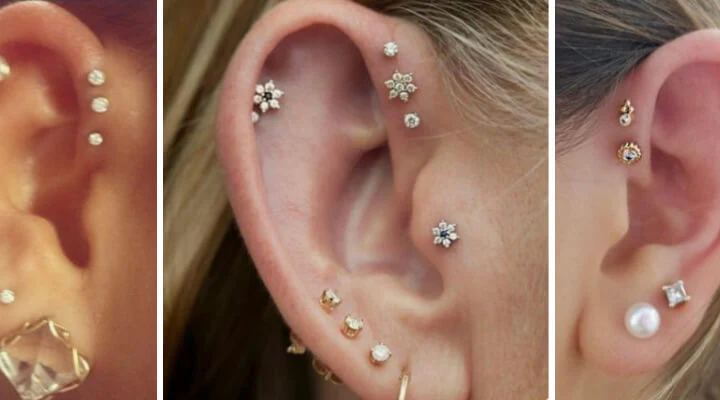Table of Contents
Introduction:
Piercings have long been a form of self-expression, with enthusiasts adorning their bodies with various types of jewelry to showcase their individuality. One such piercing that has gained popularity in recent years is the forward helix piercing. Situated on the outer rim of the ear, the forward helix piercing offers a unique and stylish way to accessorize the ear. In this comprehensive guide, we delve into the art and science of forward helix piercings, exploring everything from the anatomy of the ear to aftercare tips and styling options.
Understanding the Anatomy:

Before delving into the intricacies of forward helix piercings, it’s essential to understand the anatomy of the ear. The helix refers to the outer rim of the ear, which can be further divided into different sections. The forward helix, as the name suggests, is located at the front of the ear, just above the tragus and anti-tragus.
The forward helix area comprises a thin layer of cartilage, making it suitable for piercing. However, it’s essential to note that the thickness and shape of the cartilage can vary from person to person, influencing the piercing process and healing time.
Piercing Process and Procedure:
The process of getting a forward helix piercing involves several steps to ensure safety and precision. Before the piercing, the piercer will assess the anatomy of the ear to determine the optimal placement for the jewelry. This may involve marking the piercing site with a sterile marker to ensure accuracy.
Once the placement is determined, the piercer will sterilize the area and use a hollow needle to create the piercing. It’s crucial to choose a professional and experienced piercer who follows strict hygiene protocols to minimize the risk of infection and complications.
Aftercare and Healing:

Proper aftercare is essential for ensuring the successful healing of a forward helix piercing. Immediately after the piercing, the piercer may provide instructions on cleaning and caring for the piercing site. This typically involves using a saline solution or mild soap to cleanse the area and avoiding touching or twisting the jewelry.
During the healing process, which can take several weeks to months, it’s essential to avoid activities that may irritate the piercing, such as sleeping on the pierced ear or wearing headphones. It’s also crucial to refrain from changing or removing the jewelry prematurely, as this can disrupt the healing process.
Styling Options and Jewelry:
One of the most exciting aspects of forward helix piercings is the wide range of styling options and jewelry choices available. From simple studs to elaborate hoops and gemstone embellishments, there are endless possibilities for customizing the look of a forward helix piercing.
Some popular jewelry options for forward helix piercings include:
Studs: Small, discreet studs are a classic choice for forward helix piercings, offering a subtle yet stylish accent to the ear.
Hoops: Hoop earrings come in various sizes and designs, allowing for versatile styling options. From simple seamless hoops to intricate designs, hoops can add a touch of elegance or edginess to the piercing.
Cuffs: Ear cuffs are a trendy alternative to traditional earrings, offering a non-permanent way to adorn the forward helix area. Cuffs come in a range of designs, from minimalist to statement-making.
Labret studs: Labret studs feature a flat backplate and a decorative front, making them ideal for forward helix piercings. They offer stability and comfort while adding a touch of sophistication to the ear.
Tips for Care and Maintenance:

To maintain the health and longevity of a forward helix piercing, it’s essential to follow a few key tips:
Cleanse the piercing site regularly with saline solution or mild soap to prevent infection.
Avoid touching or twisting the jewelry, as this can introduce bacteria and delay healing.
Be mindful of activities that may irritate the piercing, such as swimming in chlorinated water or participating in contact sports.
Consult a professional piercer if you experience any signs of infection, such as redness, swelling, or discharge.
Conclusion:
Forward helix piercings offer a unique and stylish way to accessorize the ear, allowing individuals to showcase their personal style and creativity. From the piercing process to aftercare and styling options, there are many factors to consider when embarking on the journey of getting a forward helix piercing.
By understanding the anatomy of the ear, choosing a reputable piercer, and following proper aftercare guidelines, individuals can enjoy a safe and successful piercing experience. Whether opting for a subtle stud or a statement-making hoop, forward helix piercings offer endless opportunities for self-expression and individuality.
More Information Please Visit These Websites Craiyon And arturia

